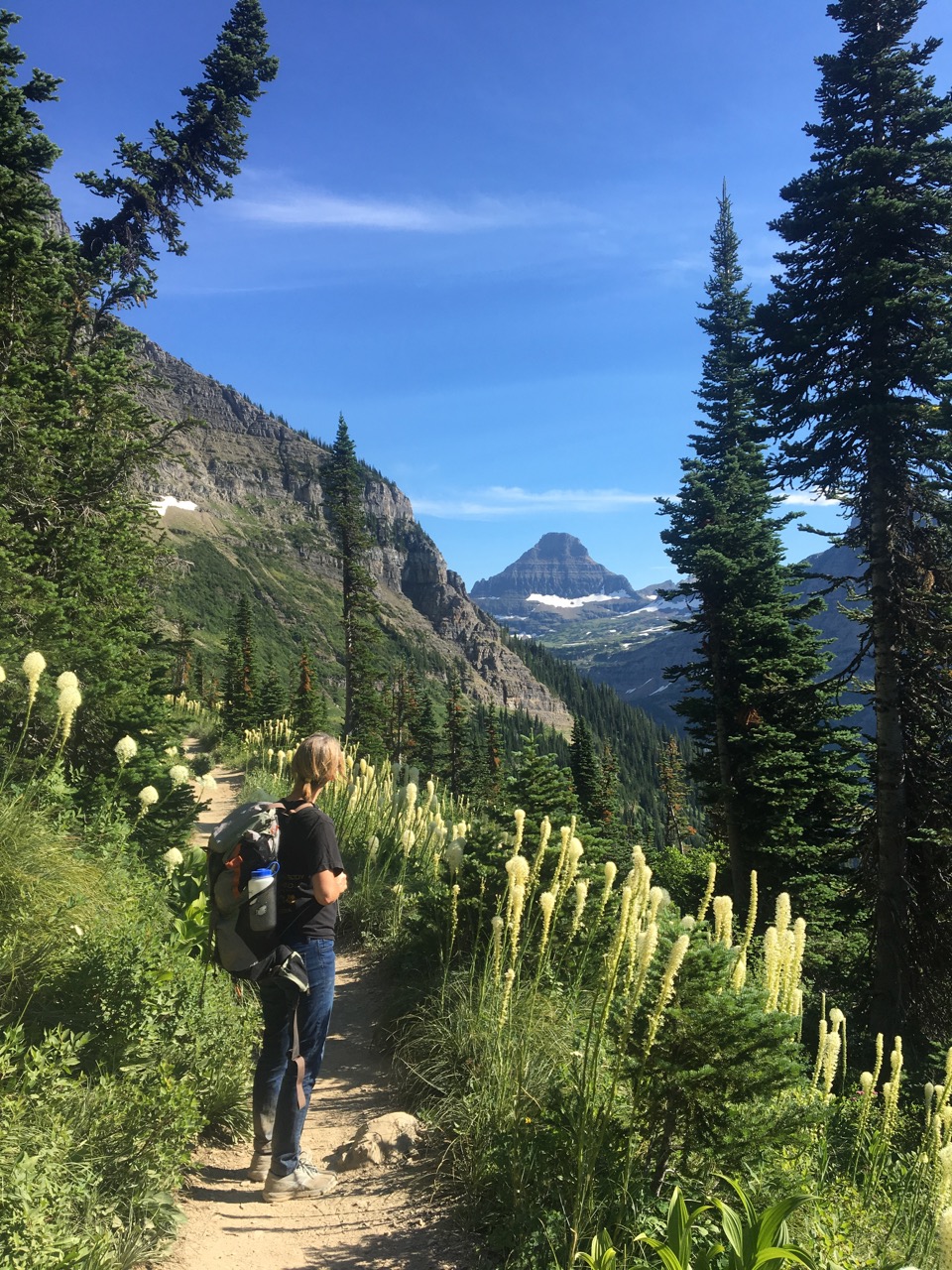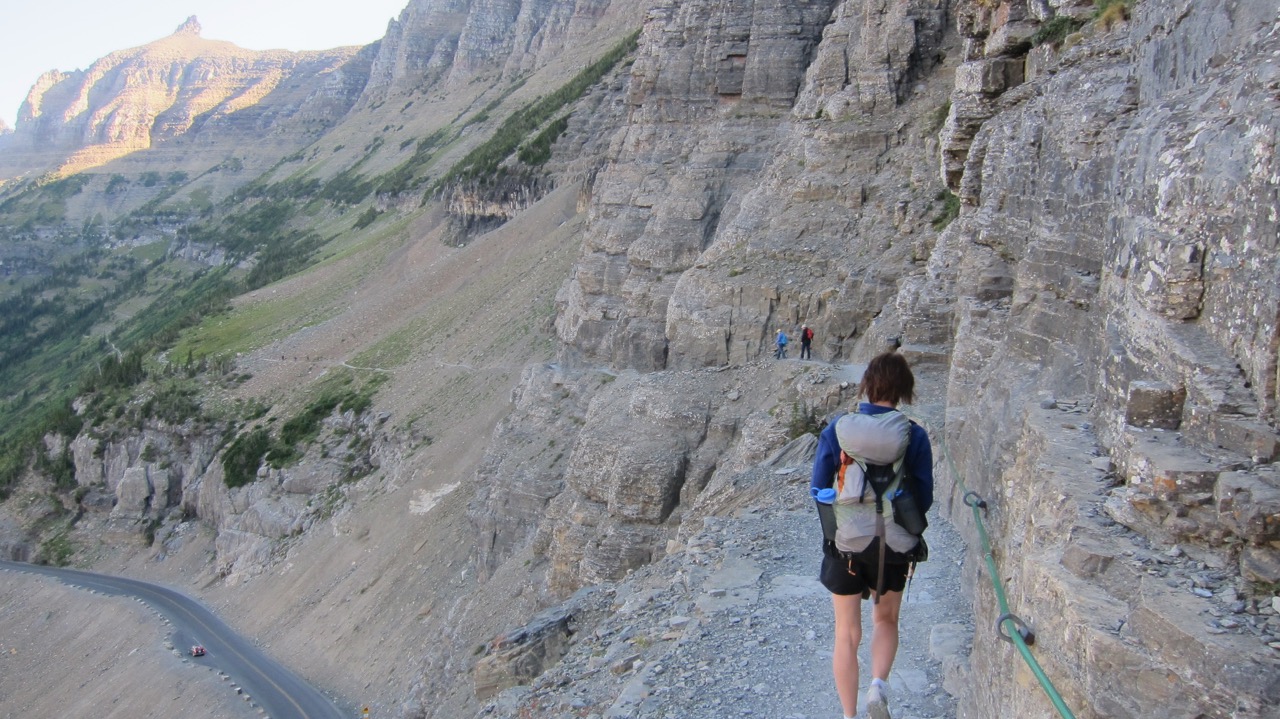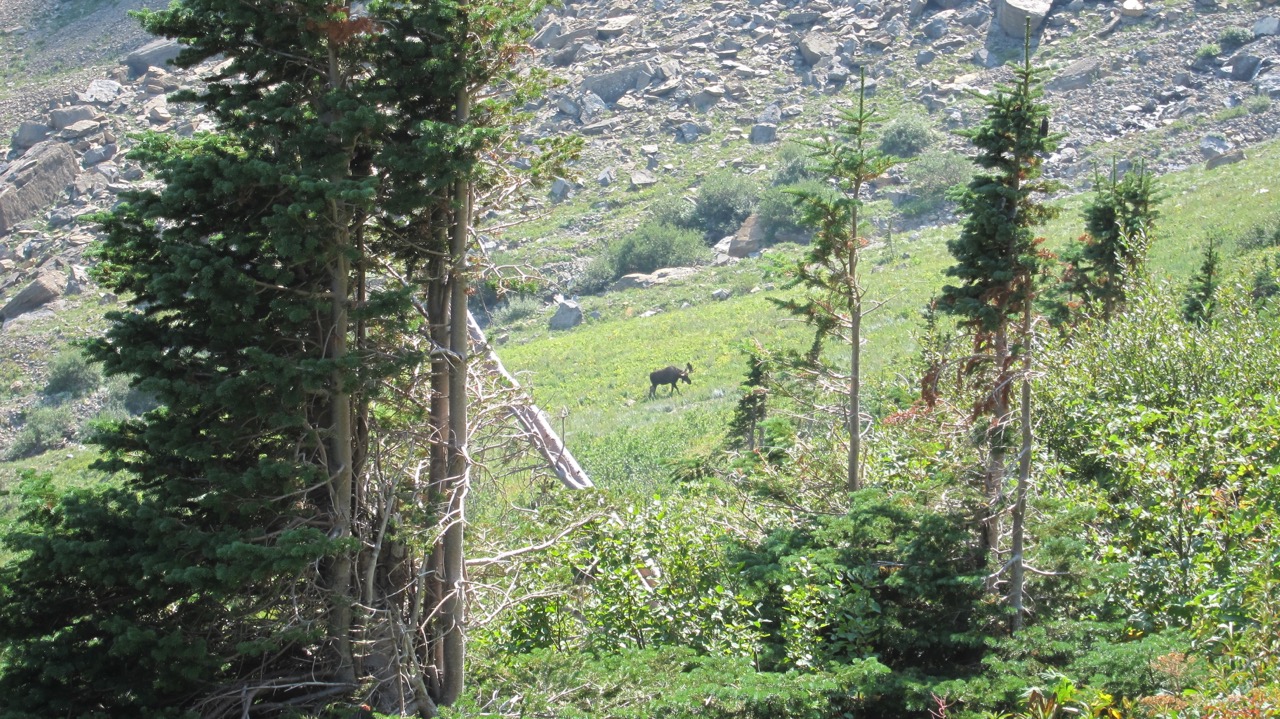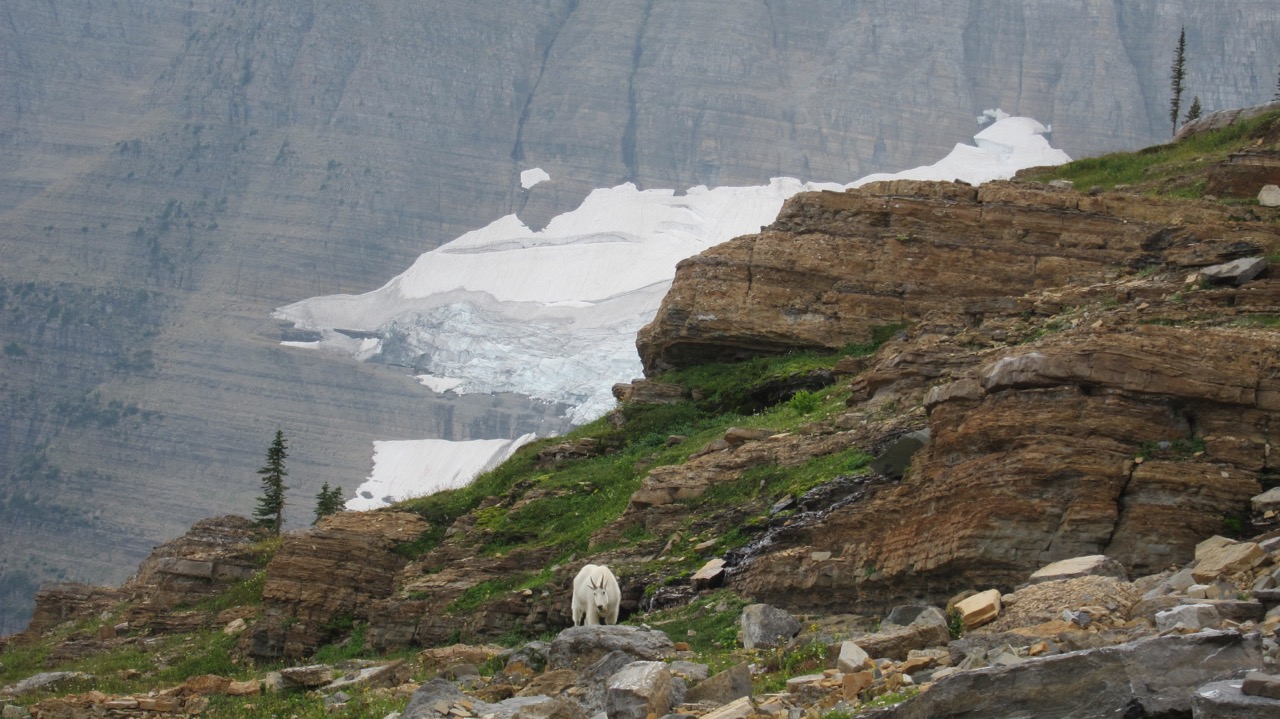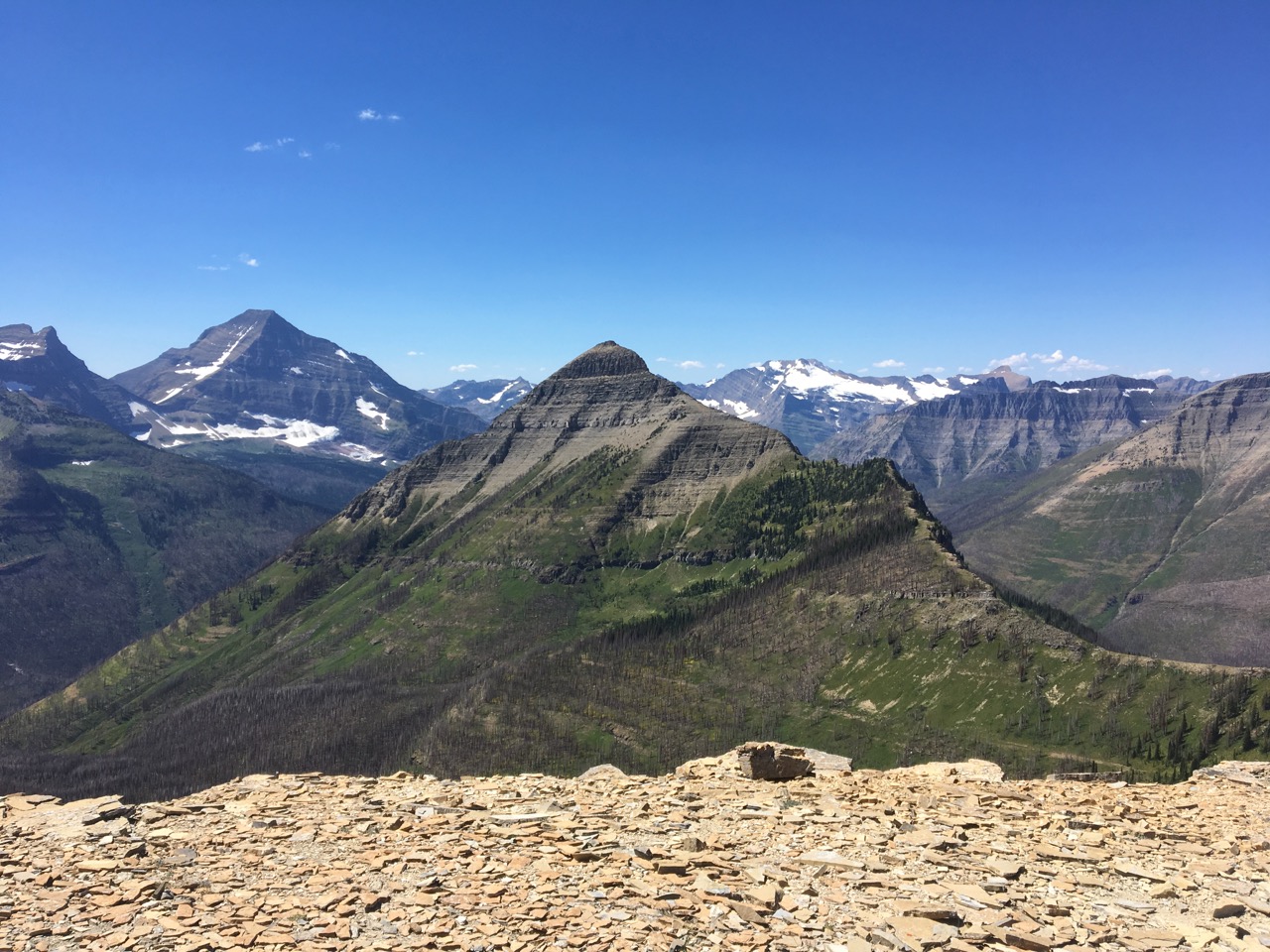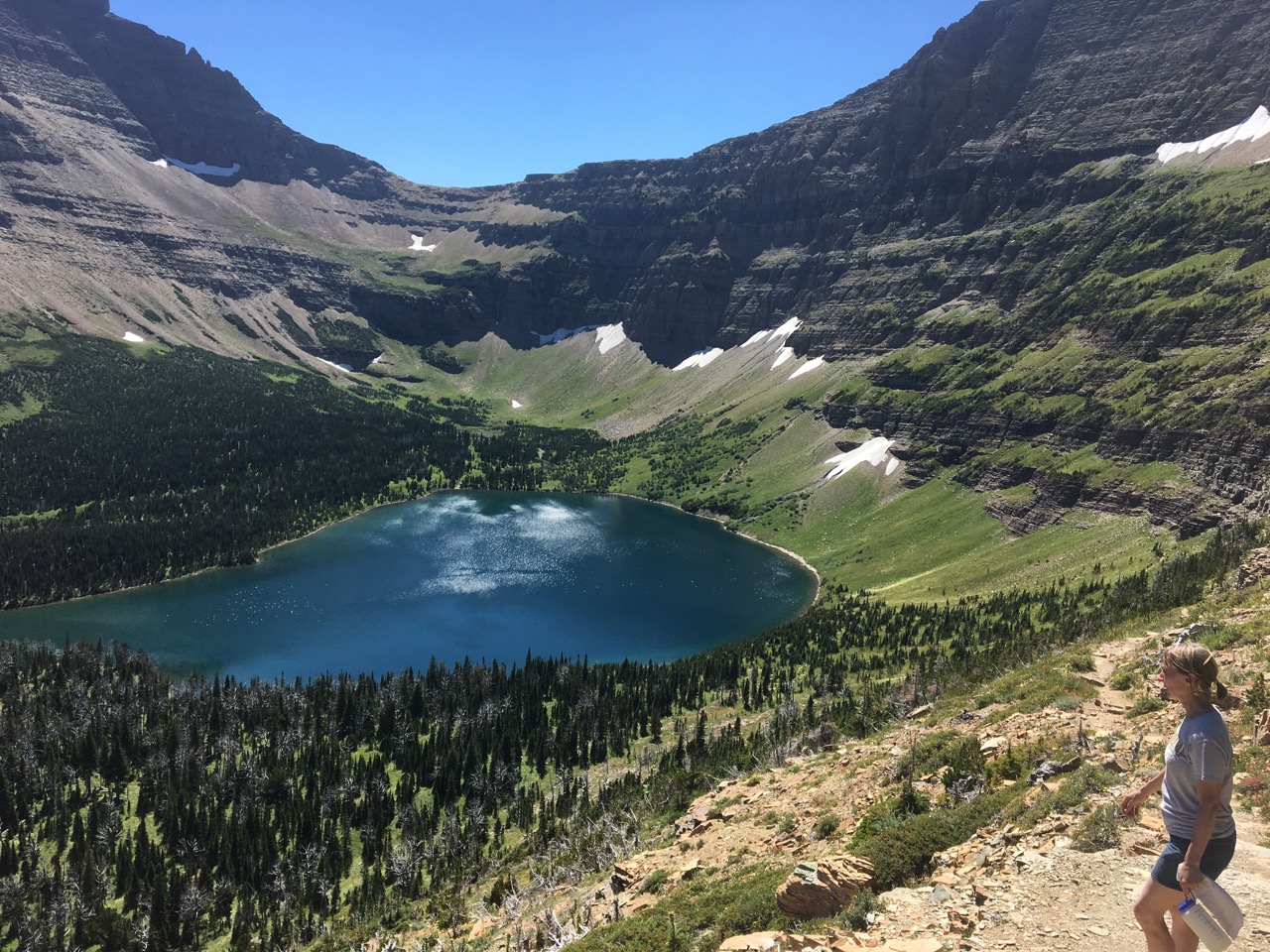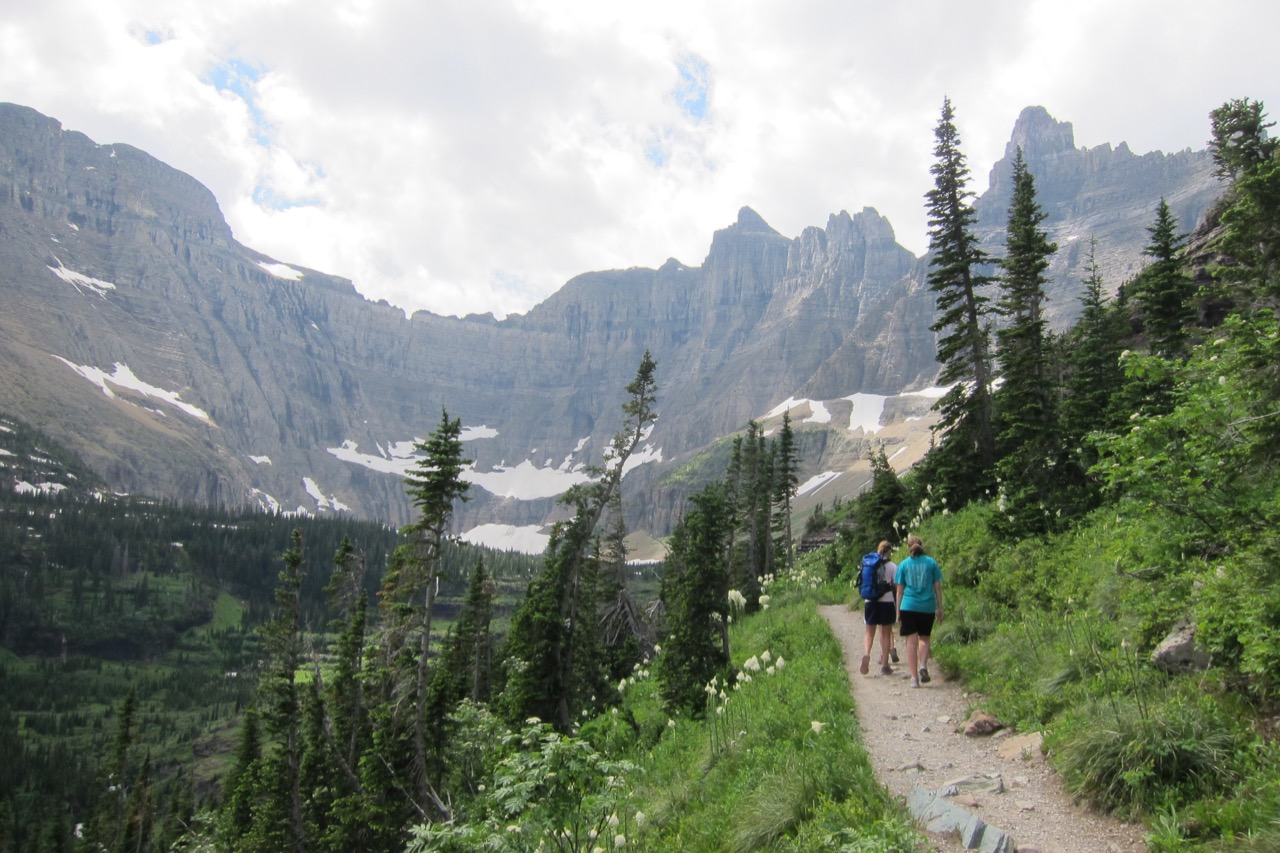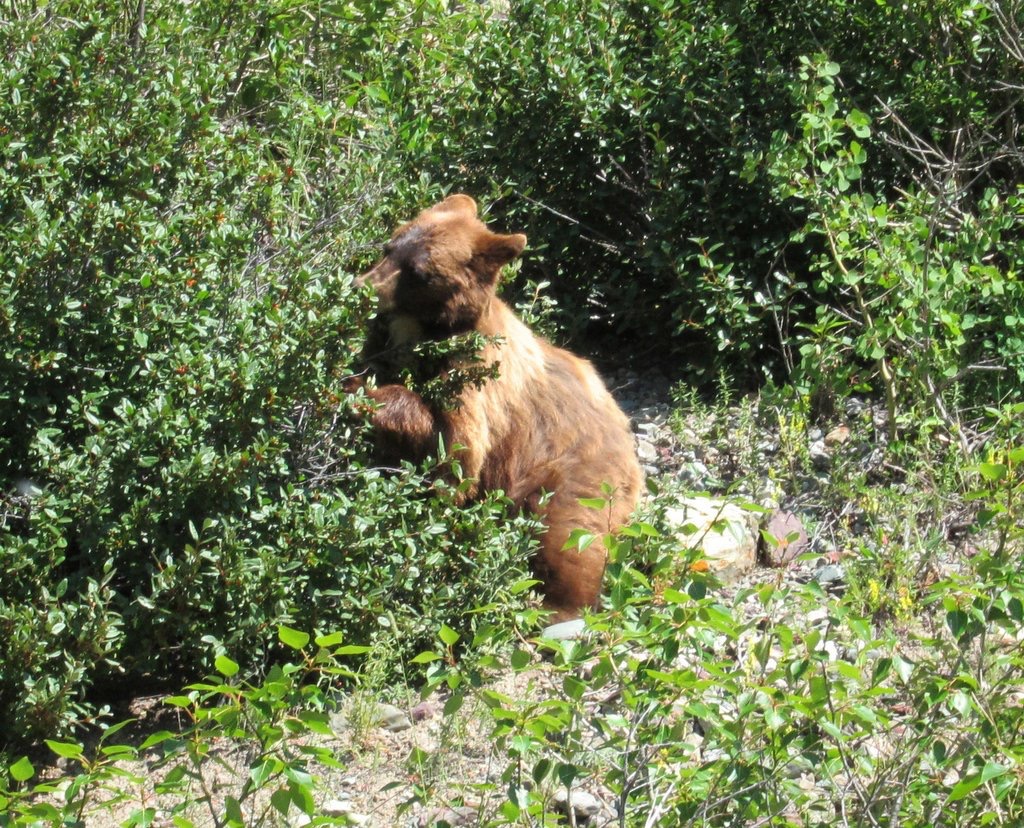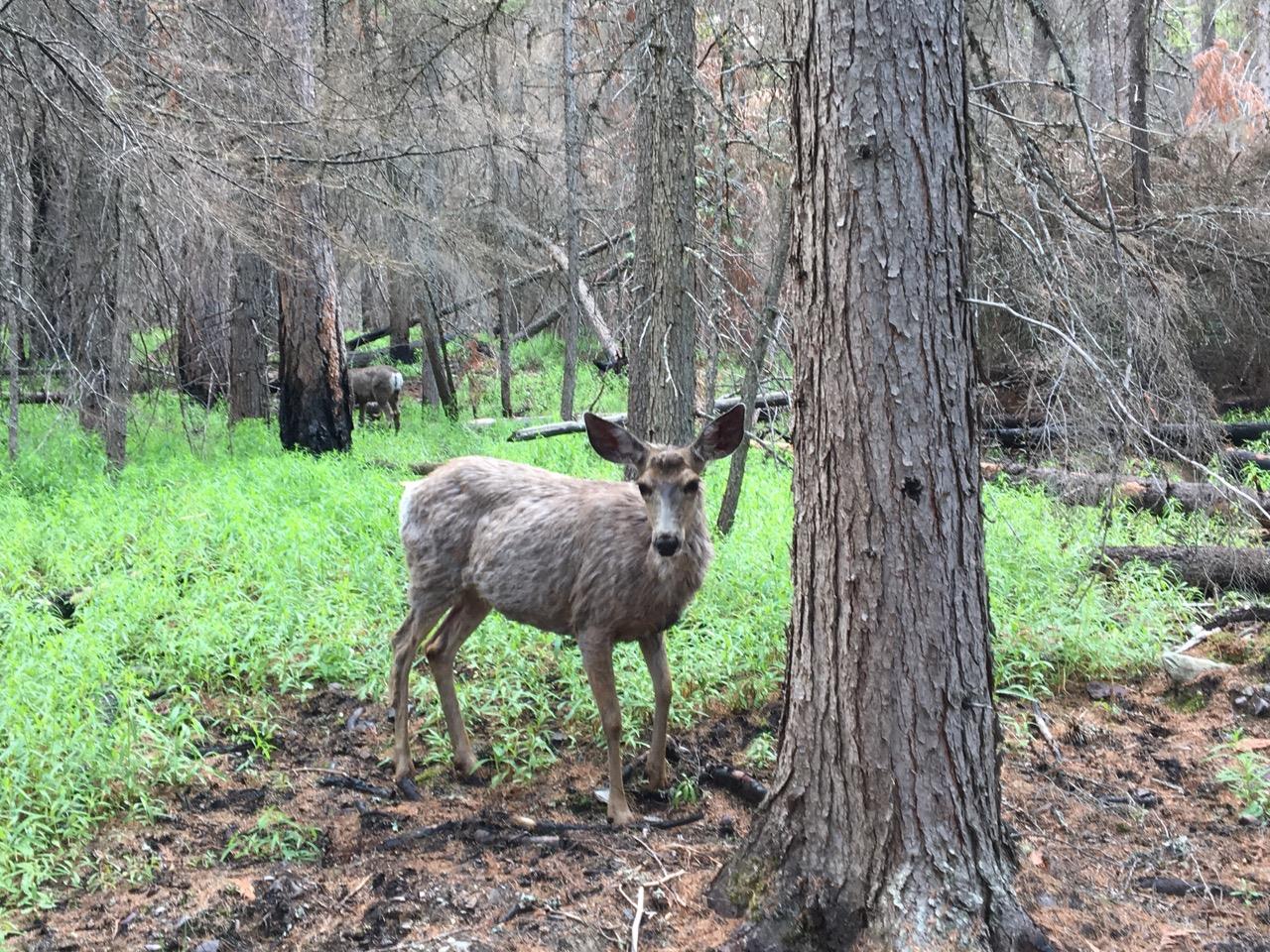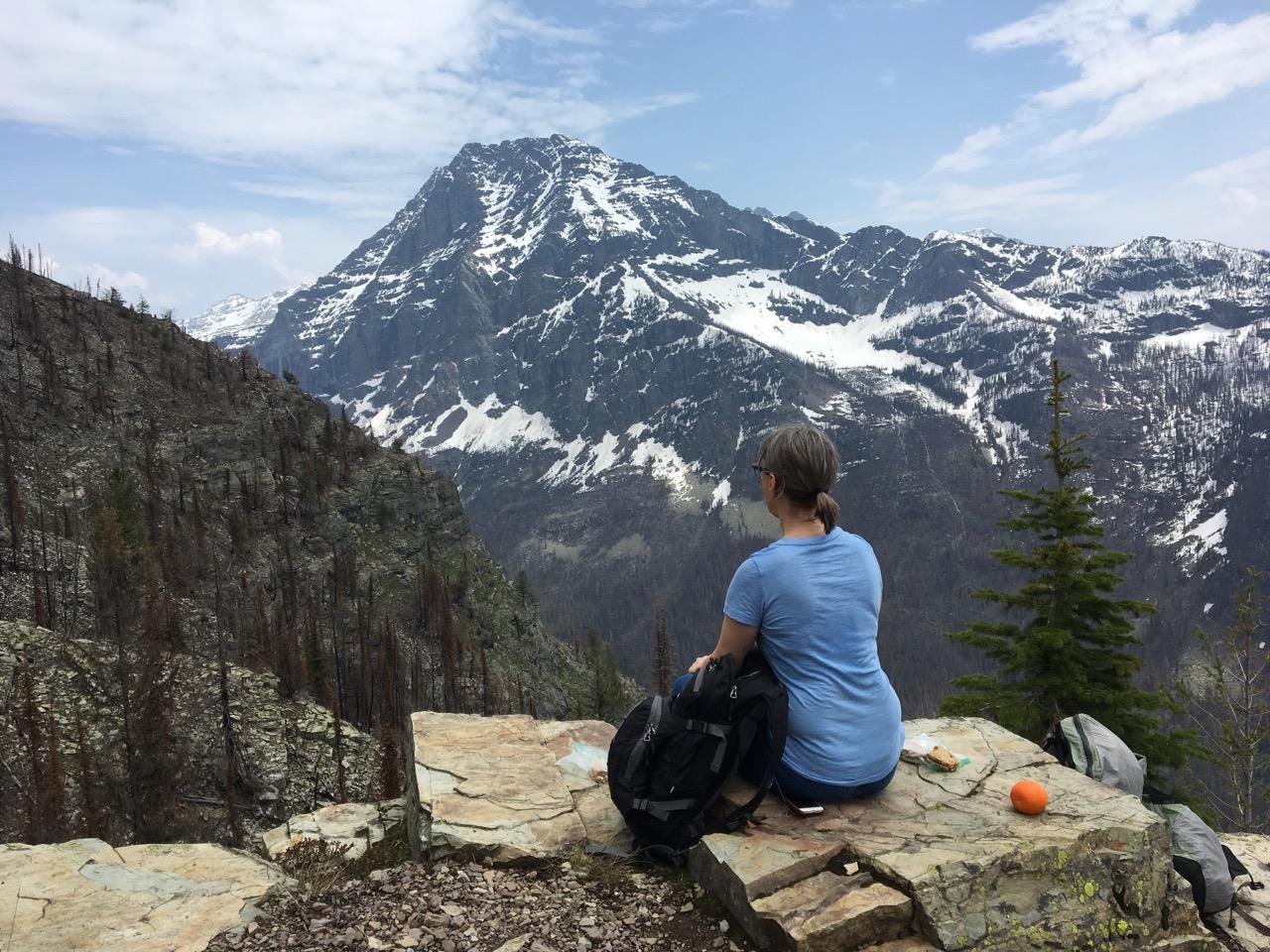A popular Many Glacier hike, Iceberg Lake offers magnificent valley and mountain views, wildflowers, frequent grizzly sightings, and a picturesque lake tucked into a high glacial cirque. Starting from the Swiftcurrent Inn, the trail quickly ascends an open south-facing slope filled with beargrass, fireweed, red monkey flowers and parnassias. Eventually the trail levels out and continues to head northwest, high above Wilbur Creek, with Mt. Wilbur dominating the views to the left across the valley and Altyn Peak then Mt. Henkel on the right above the trail. Look for grizzlies in the meadows above and below the trial.
At 4.1 miles, the trail crosses over Ptarmigan Creek at Ptarmigan Falls and splits off from the trail leading to Ptarmigan Lake and the Ptarmigan Tunnel. The glacial cirque containing the lake is quite tight, holding only the lake and surrounding snowfields, then rising 3000 ft to the continental divide. An active glacier was present at the head of the lake up until a hundred years ago and large blocks of ice would break off from the glacier and float around in the lake in summer, thus giving Iceberg Lake its name.
Below left: The glacial cirque containing Iceberg Lake comes into view
Below right: Meadows full of wildflowers on the approach above Swiftcurrent
